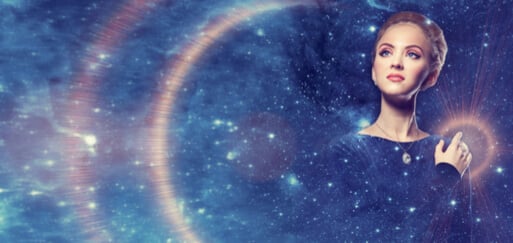Diamonds are steeped in myth and legend. From the moment diamonds were first discovered, their power and mystery have intrigued us humans. Throughout the centuries, different diamond myths have emerged from different cultures. Even today, with so much scientific knowledge about diamonds at our fingertips, there are various beliefs about diamonds - many of them under hot debate. Let’s go back in time to the ancient mythical tales of diamonds, and then we’ll fast forward to the 21st century, to the modern myths that capture our imaginations today.
Ancient Diamond Myths: A Blend of Mystery & Beauty
Many of the ancient myths surrounding diamonds came from the lack of scientific knowledge of the times. Still, it is fascinating to consider the power that diamonds held in culture and superstition, long before modern marketing campaigns.
Power and Strength
Diamonds got their name from the Greek word “adamas”, which means “invincible”. According to the ancient Greeks and Romans, the tips of Cupid’s arrows were capped with diamonds to increase their magic. They believed that diamonds were tears from the Gods or slivers of the stars. The Romans wore diamonds into battle as a talisman of strength, bravery, and invincibility. Kings would lead their soldiers into battle wearing a breastplate studded with diamonds. The enemy believed that diamonds gave the opposing king magical powers and they would flee from the battleground in fear.
Lightning Bolts Shards
The Hindus believed that when lightning hit rocks, diamonds would be created by fragments of the shattered rock. They also thought that diamonds attracted lightning bolts.
Magical Amulets
Diamonds were set in rings as amulets that would provide magic powers to the wearer. Diamond rings set in gold were worn on the left hand to ward against nightmares, devils and phantoms. It was also believed that when a diamond touched each corner of a house, then the house was protected from storms and lighting.
Healing Powers
There is a medicinal legend about diamonds. Diamonds were thought to have healing abilities and were able to alleviate depression, exhaustion, mental illness, as well as cure stomach aches, memory loss, skin diseases, infections and heart ailments. To cure a malady, they would place the diamond on the affected area and warm it with their body.
Poison
It was discovered during the Renaissance period that diamonds were not healing stones but were actually poison. The Turkish Sultan Bajazet’s son murdered his father by putting powdered diamonds in his father’s food. Pope Clement VII died when taking a medicine made from powdered diamond. And famously Catherine de Medici would put people to death using diamond powder.
Modern Diamond Myths: A Matter of Opinion?
Modern science and technology has removed the superstition and mystery of diamonds that dominated ancient lore. Yet, diamonds still hold a place of fascination in the modern mind. In the 1950s, the brilliant marketing campaign ‘Diamonds are forever’ made the diamond the ultimate symbol of engagement, which remains solid until today. In fact, diamonds are so strongly connected to love and marriage, it is difficult to imagine there was ever a time that diamond engagement rings weren’t a ‘thing’.
Still, modern debate has given way to a number of conflicting beliefs about diamonds. Let’s discuss a few of them:
Diamonds are rare. Or alternatively, diamonds are common.
Today’s consumers sometime struggle with the question of whether diamonds are truly rare. After all, there is a plethora of diamonds, in every size, shape and cost, available in thousands of jewelry stores worldwide. Online diamond stores have massively expanded the end consumer’s accessibility to an endless supply of polished diamonds. In 2016, approximately 128 million carats of diamonds were produced from mines around the world. With numbers like that, it’s hard for the average consumer to accept that diamonds are ‘rare’. However, many consumers are probably unaware that the majority of mined diamonds (80% in fact) are not fit for use as gemstones and are used for industrial purposes.
However, while diamonds are not an uncommon gemstone, high quality polished diamonds are in fact relatively rare. Mined diamonds that are flawless, pure in color and expertly cut to maximize light performance are not ‘common’. These diamonds undergo an expensive, labor-intensive, technologically-intensive process to transform from a rough to polished diamond. And this long manufacturing process constitutes a major part of the final cost of the diamond to the end consumer.
Lab grown diamonds are fake. Or alternatively, lab grown diamonds are real.
Synthetic, or lab grown diamonds, have an identical physical makeup to natural diamonds. However, the difference in the way they came into being could not be more stark.
Natural mined diamonds are formed deep in the earth under intense pressure over billions of years. The extraction process is highly complex and expensive, requiring massive resources and access to mines. At the same time, up to 20% of diamonds are mined by ‘artisanal miners’, individuals who search for diamonds using more basic, manual equipment. The diamond mining industry is an important source of livelihood for these people.
Lab grown diamonds have identical physical, chemical and structural properties to natural diamonds, however they are produced in a lab environment using various technologies developed for the purpose. It is extremely difficult to distinguish between a natural and a lab grown diamond. It demands the highest level of gemmological expertise and advanced diamond detection technologies.
If the physical properties of mined and lab grown diamonds are the same, then there is an argument to be made that synthetic diamonds are ‘real’. However there is no denying the vast difference in the fundamental identity of diamonds formed in the depths of nature, versus diamonds developed by machines in a lab.
Diamonds are an art. Or alternatively, diamonds are a science.
The production of beautiful polished diamonds demands an awe-inspiring level of craftsmanship. Indeed, a skilled diamond polisher possesses the finest artistic skills developed over years of painstaking practice. However, science, technology, and even mathematics, play a critical role in the art of producing the highest performing diamonds.
The science of diamonds goes back to 1919, when Marcel Tolkowsky developed the round brilliant cut. As stated in this obituary after his passing in 1991, “as part of his doctoral thesis at the University of London, Mr. Tolkowsky developed a mathematical formula for cutting and angling facets on diamonds to provide maximum reflected light and optimum brilliance. The process, which called for cutting 58 facets on a diamond, came to be known as the "ideal cut."”
In the century since Tolkowsky’s work, advanced diamond measurement and analysis technologies have perfected the science of diamond cutting. This has enabled the development of a wide range of cuts that perform maximally in the light, and further refined Tolkowsky’s breakthrough development that paved the way for the future of diamond cutting.
Art or science? Art based on science? Science influenced by art? You decide.
We create myths, legends, and stories to explain that which we do not understand. Of course now with science and technology, we know that diamonds do not possess healing powers, nor are they created from lightning bolts. But we love to recall the fantasies of diamonds as a memory of the past, even as we continue debating many new and controversial aspects of diamonds today.




-1.jpg?width=310&name=blog_image%20(003)-1.jpg)





